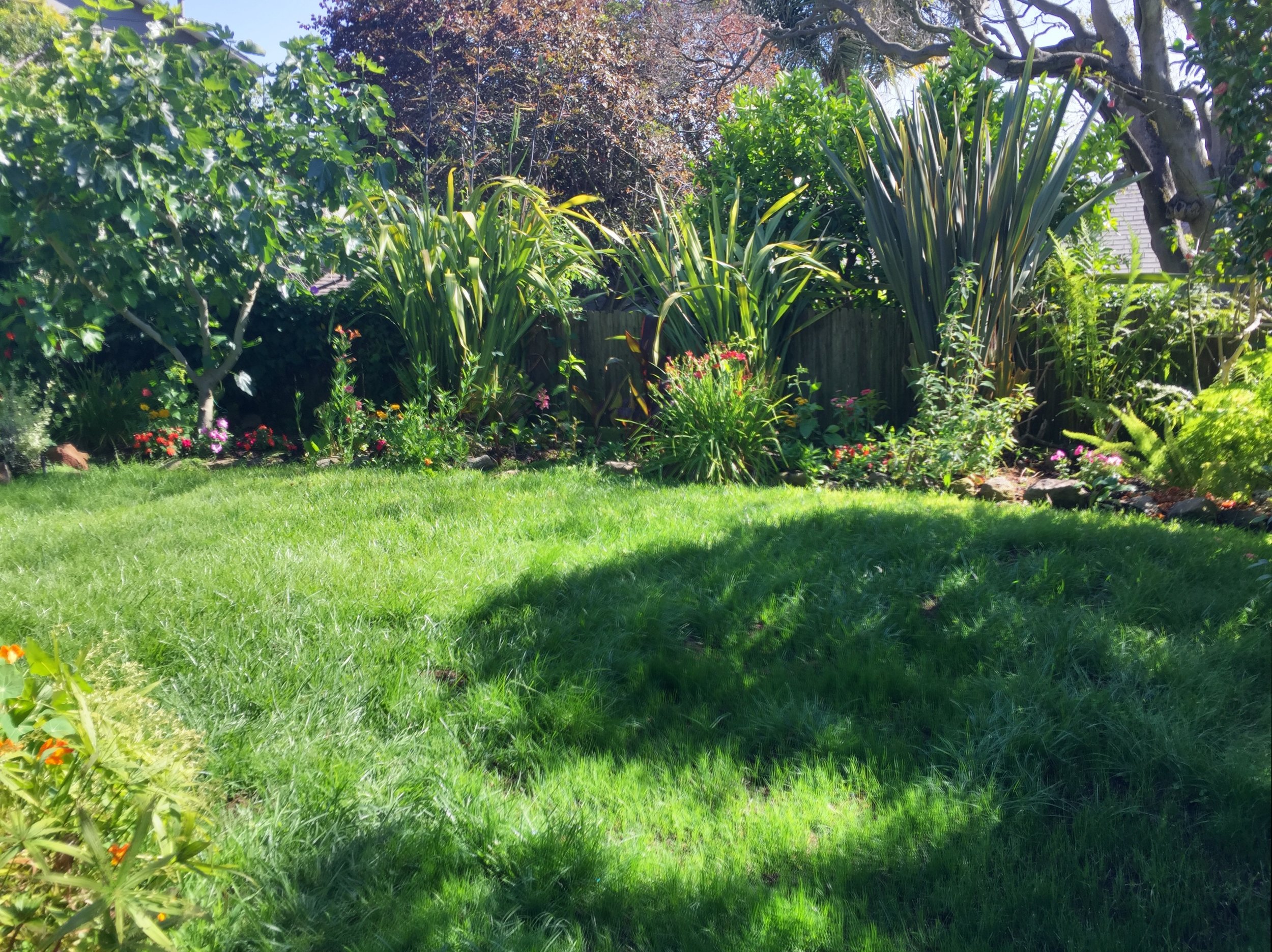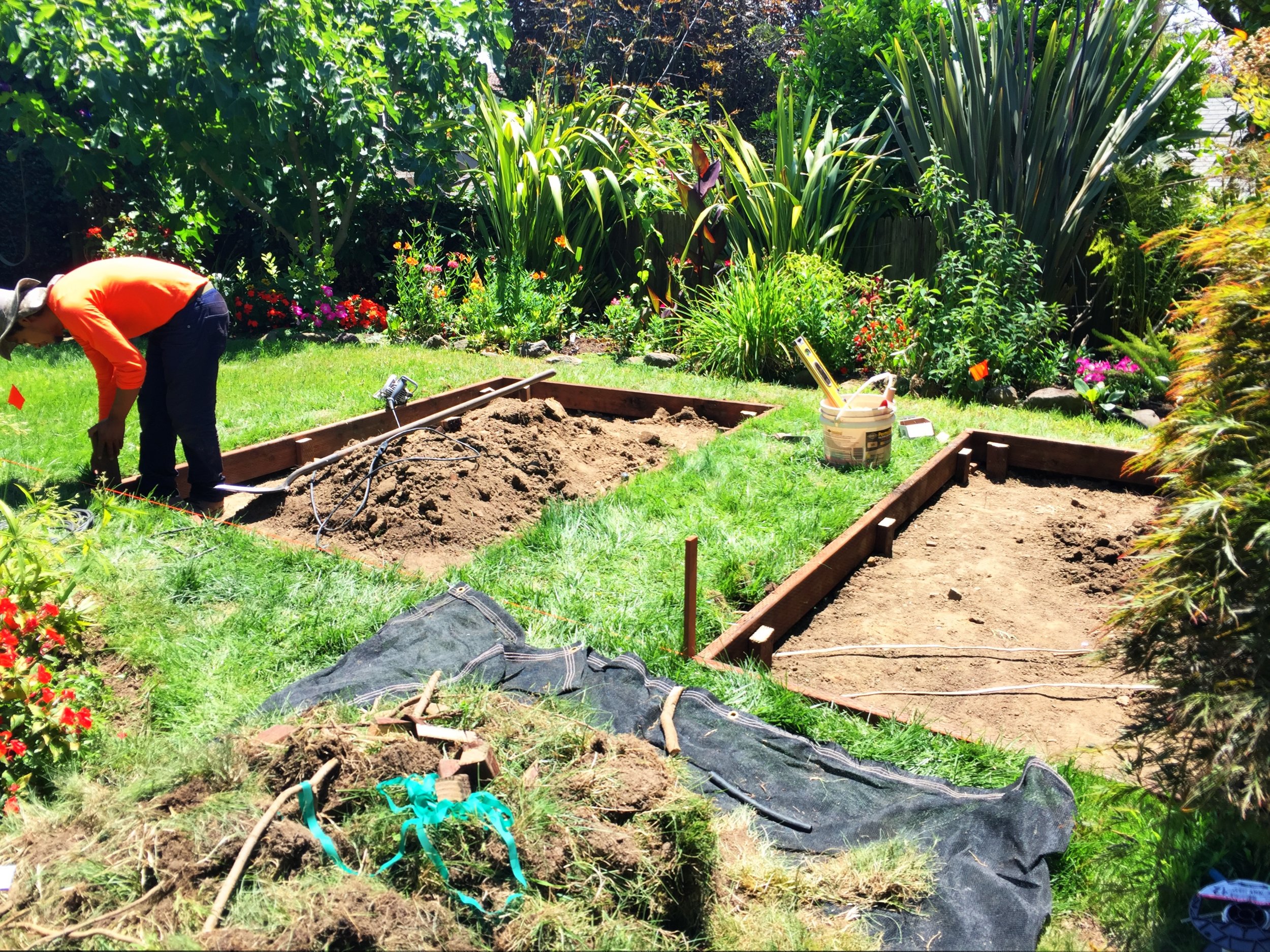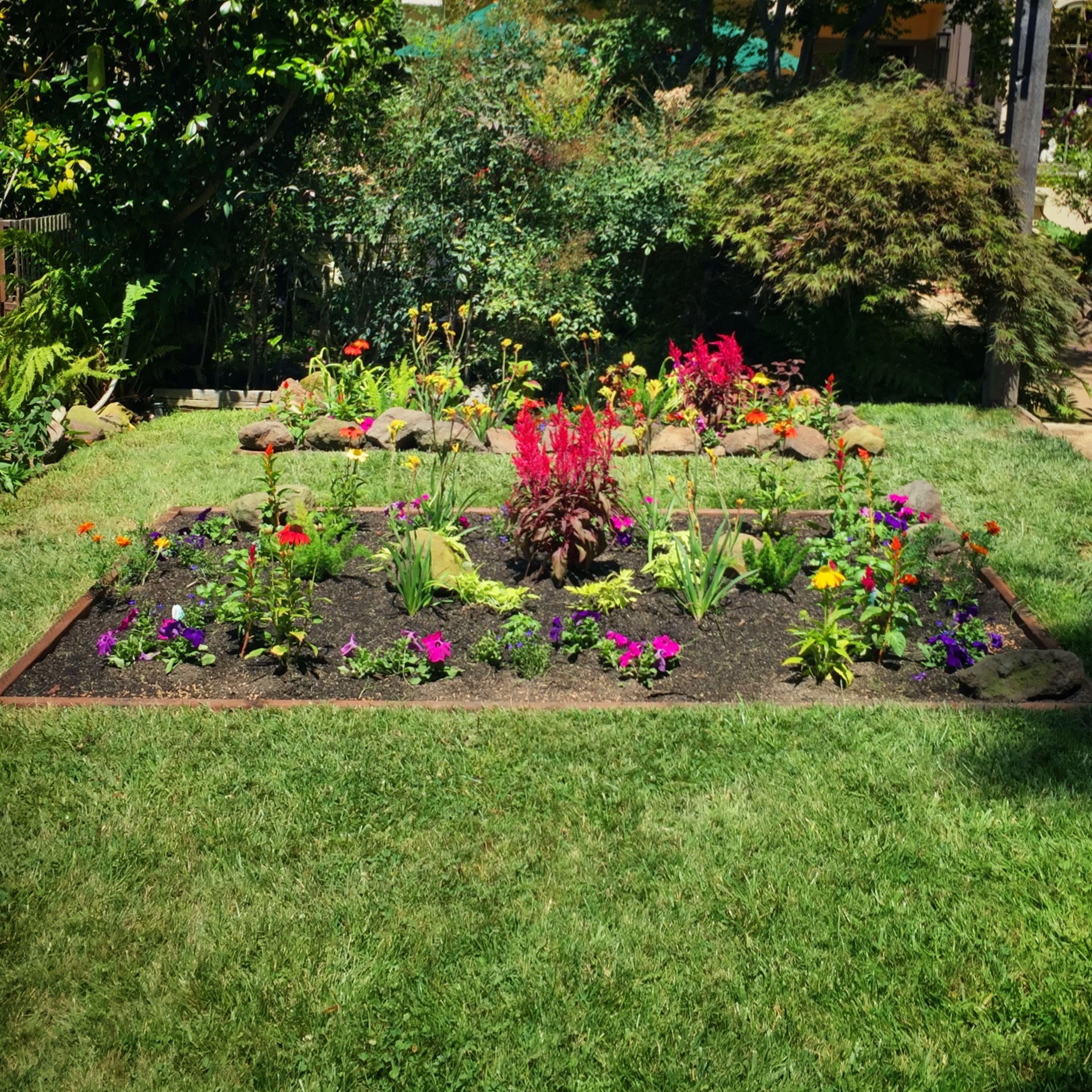I tore up my thirsty lawn for something better
I fell hard for gardening in my early 20's. I had just fled too-urban New York City for a rental house in Oakland, and was thrilled by the trees and space and flowers. My first garden was teeny, just a patch of dirt out front. But 30 years later I had a house and a yard divided into what I consider rooms, which means each section has its own feel.
If you stroll down a path under an arbor, you come to a patio and a curving lawn bordered by flower beds. The lawn was my husband's idea. He loves it and wanted it for the kids. But the kids are now in their 20s and 30s, and I've never been a fan of dedicating so much yard to grass. It makes the flower beds feel far away from the patio where we sit, and it's space that could be put to good use growing food and flowers. Besides, lawns are thirsty and we live in the drought-ravaged Bay Area.
I wondered if a compromise was possible, and shared a plan with my husband. And that was the beginning of our yard makeover.
The problem: A too-Thirsty lawn
Lawns need a lot of water and cutting it uses up fossil fuels. On top of that, our grass makes the planting beds feel far away from the patio, which is where we spend most of our time. What if I cut two rectangular beds right into part of the lawn, I asked my husband, who was loathe to change anything. I told him I'd leave grass pathways all around the beds, which would create the illusion the lawn still lives there. Because he is a great guy, he agreed to let me give it a go.
Step One: Frame the beds
To edge the beds, I decided to use pressure-treated lumber sunk into the ground. Building wood frames is beyond me and I didn't want to drag in my less-than-100%-on-board husband. So I hired someone to help me with the digging and building. Our soil is clay, which means it doesn't drain well. We removed about a foot's worth of old, weed-infested dirt. If you'd rather not build frames, you can create planting beds using a combination of compost, soil, and mulch. First put down a layer of moistened cardboard or newspaper over your lawn to smother weeds. Then layer on grass, leaves, and compost in layers about four inches thick, and repeat three times. (The mound will eventually settle as bacteria and organisms work to decompose and shrink the pile.) Finish off the heap with some fresh topsoil or well-aged compost, and you're ready to plant.
step two: lay out the plants
Our soil is clay, which means it doesn't drain well. So I decided to dig down about a foot and take out the old, weed-infested dirt.Once the beds were ready I played around with where I'd place the plants I chose because they tie in with the rest of the garden. I left the paths as lawn because it’s soothing, and because I knew it would make my grass-loving husband happy.
step three: smother the weeds
After laying out the plants, I slipped in some newspaper to smother any remaining weeds or weed seeds. Then I filled the beds with a foot of great soil enriched with enough compost to give my plants a healthy start.
Step four: feed your soil
I mixed about an inch of fresh compost into my soil before installing my plants, which include basil, cilantro, and lettuces. I will add more food crops next year.
A plant bed, with room to grow
The whole thing took three days. In the end, I think the beds are really beautiful. Now, when you walk down the path to the part of the garden that used to be all lawn, there is a rush of color. And sitting out to eat, we feel close to the beds. When the plants grow bigger and fill in, they'll create a lush landscape filled not just with blooms but with food, too. Not only don’t I miss the thirsty grass, I'm thinking of replacing what remains with more beds next year. This time I don't think my husband will need much convincing.
The Garden: One Year Later
In the 2019 following season, I use the beds as a cutting and veggie garden. The beds have cilantro, basil, tomatoes, and some lettuces, plus flowers of course. I added tomatoes to the mix this year and tried cucumbers.
The maintenance of the new beds has been surprisingly easy. My newspaper mulch really worked to keep weeds at bay. The plants are thriving and the lawn irrigation naturally sprays the new garden as well. I thought I'd be overrun with clover, since that is in the lawn, but have seen none so far. As you can see from the after photos, things are doing well with little maintenance or care.
I traveled much of the summer (six trips!). And, had I been around more, I would have added more plants or even garden beds; but, even so, the garden is lovely and a home for butterflies and many bees. I'm very happy with the outcome of this project.
Mila Holt owned a television production company specializing in creating series for the HGTV and DIY networks. Her series included Color Splash, Curb Appeal, Landscape Smart, and Grow It: A Gardener's Guide. She lives, and gardens, in Oakland, California.







